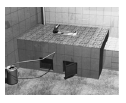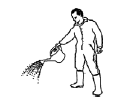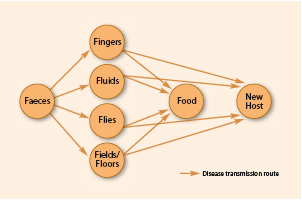Ecological Sanitation
Promoting health and preventing disease 1, 2, 3, 4
The main objective of ecological sanitation, and all sanitation approaches, is to prevent the spread of diseases by creating barriers between pathogens and human beings.
When a person excretes pathogens which are not contained or destroyed, the environment becomes contaminated. Once human excreta gain access to the larger environment, they can contaminate fingers (hands, clothes and utensils), fluids (e.g. drinking and cooking water, beverages and other water bodies), fields (e.g. vegetables and household yards) and flies (e.g. houseflies and blowflies, domestic animals and snails).
People may be exposed to pathogens directly through these routes or via food. A contaminated environment puts people at risk of exposure to the pathogens, leading to infectionInfection: the growth of a parasitic organism within the body. (A parasitic organism is one that lives on or in another organism and draws its nourishment therefrom). This does not necessarily lead to symptoms. and diseaseA disease is an obnormal condition of an organism that impairs the function of the body. It is associated with specific symptoms.. Newly infected people then excrete into the environment and there is a repeated cycle of infection, contamination and infection.









